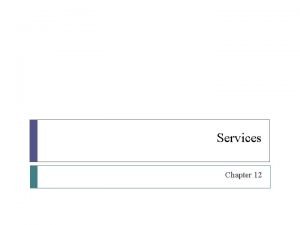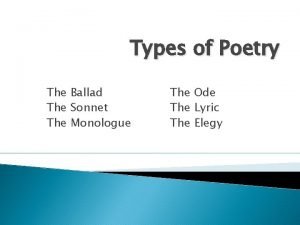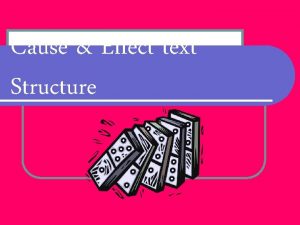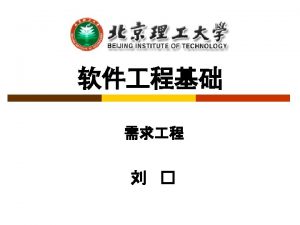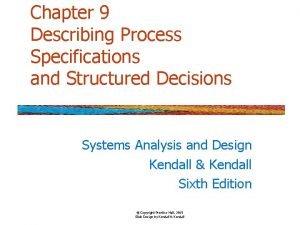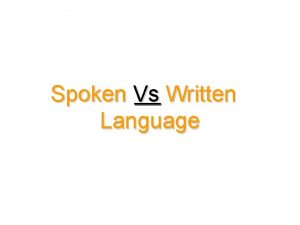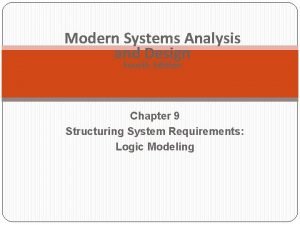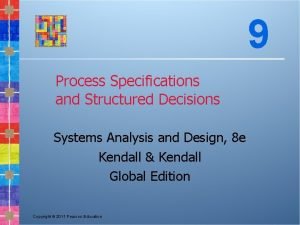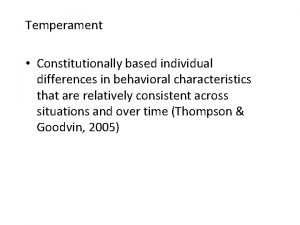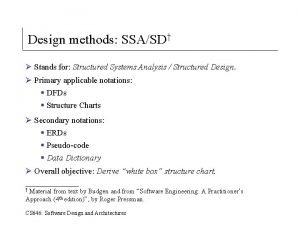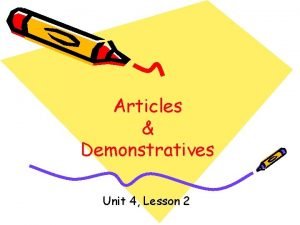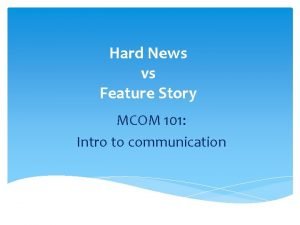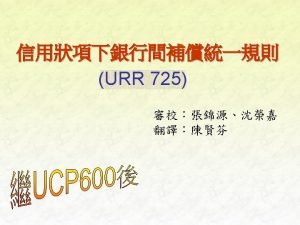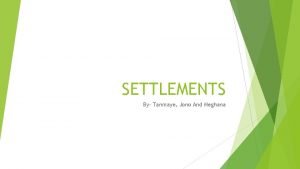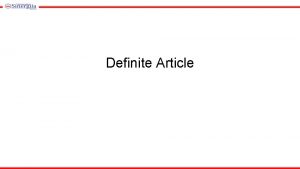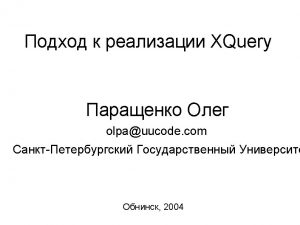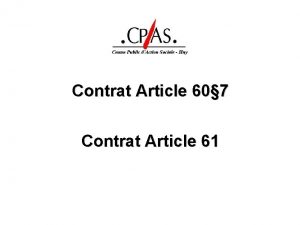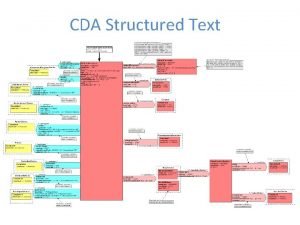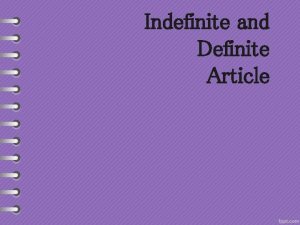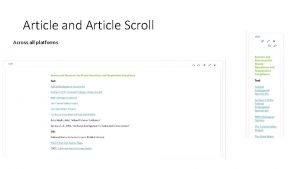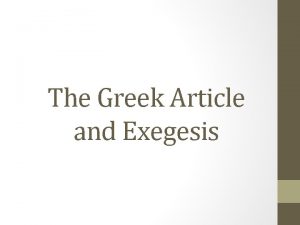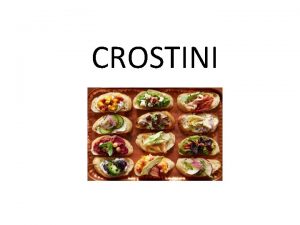STRUCTURED SETTLEMENTS AND CPLR ARTICLE 50 A STRUCTURED









































- Slides: 41

STRUCTURED SETTLEMENTS AND CPLR ARTICLE 50 -A (STRUCTURED JUDGMENTS) PRESENTED BY TODD A. KIPNES, JD, MBA KIPNES CROWLEY GROUP LLC OCTOBER 25, 2013

LUMP SUM V. PERIODIC PAYMENTS Even though tort settlements may compensate for past, present and future damages, the claimant traditionally received payment in a single lump sum. As an alternative, the claimant can receive a judgment or settlement partly in the form of periodic payments (i. e. , future payments on set dates in set amounts). This is termed a structured settlement or judgment.

EASY COME, EASY GO I spent 90% of my money on fast cars, women and whiskey…the rest I just wasted. - Tug Mc. Graw


PUBLIC POLICY FAVORS STRUCTURED SETTLEMENTS AND JUDGMENTS The Laws • Structured settlement benefits are tax-free. • Almost every state guarantees structured settlement benefits up to a certain amount. (In NY, the guarantee is $500, 000 per contract. ) • NY CPLR Article 50 A requires most future damages (over $500, 000) to be paid through a structured settlement. • NY CPLR § 1206(c) deems a structured settlement one of very few investments appropriate for infants and incompetents. The Reasons • Public policy is better served when a personal injury settlement provides the intended compensation (e. g. , lost wages, future medical care, etc. ) and is not squandered by the recipient. • Structured settlements reduce claim costs by maximizing the benefits that can be derived from a personal injury settlement.

PERIODIC PAYMENTS Periodic payments are future payments made to the claimant on predetermined dates in predetermined amounts. • They may be scheduled for specific dates or be paid at regular intervals (e. g. , monthly, annually). • They may remain level over time or they may grow to account for inflation. • They may begin immediately or be deferred to a later date. Typically, periodic payments are not made directly by the Defendant. • The claimant would have to rely upon the credit worthiness of the Defendant. • The Defendant would lose the tax and accounting advantages of a single, final settlement.

ANNUITIES – FUNDING PERIODIC PAYMENTS Periodic payments are funded by an annuity (or annuities) issued by a life insurance company (or companies). • In order to be tax-advantaged, the money used to purchase the annuity must flow directly from the Defendant to the life insurance company – it cannot pass through the hands of the claimant or her attorney. • The life insurance company is contractually obligated to make the predetermined periodic payments on the predetermined dates. Although the Defendant funds the annuity, it does not own the annuity. • Simultaneous with the funding of the annuity, the Defendant assigns ownership and all obligations to make future payments to an Assignment Company (an affiliate of the life insurance company that issued the annuity). • Upon executing a valid Settlement Agreement and all assignment documents, the Defendant retains no liability or obligation with regard to the future periodic payments. • A structured settlement is a final settlement.

TAX TREATMENT Internal Revenue Code § 104(a)(2): • Excludes from taxable income any damages “received (whether by suit or agreement and whether as lump sums or as periodic payments) on account of personal physical injuries. ” • This statute, along with certain regulations and revenue rulings, establish that all periodic payments made pursuant to a structured settlement are tax-free. Each periodic payment is deemed to be a further installment of the original settlement. • This statute and the regulations promulgated thereunder also establish that the Defendant must be the party to purchase the annuity. If the Plaintiff purchases the annuity, or is in actual or constructive receipt of the annuity funding prior to its purchase, then the return on the annuity is taxable. • The primary purpose of these regulations is to promote structured settlements as a way to provide for the long-term care of injured individuals.

TAX TREATMENT Internal Revenue Code § 130: • Allows the Defendant to irrevocably assign all periodic payment obligations to an Assignee which, as a matter of practice, is an affiliate of the life insurance company that issued the annuity. • Prior to the enactment of this statute, Defendants who purchased structured settlement annuities for Plaintiffs were required to hold them. This created accounting problems and raised the specter of contingent liability should the insurance company default on annuity payments. The statute was passed to remedy these issues and encourage structured settlements. • When the Defendant makes a “qualified assignment” pursuant to § 130, the tax and accounting treatment for the Defendant are exactly the same as a lump sum settlement.

PERIODIC PAYMENT PLANS EXAMPLES



BENEFITS TO THE PLAINTIFF 1. Tax-Free: All the periodic payments made to the Plaintiff are tax-free, including the portion that represents the gain over and above what the Defendant paid for the annuity. 2. Avoidance of Market Risk: Annuities are contractual obligations guaranteed by highly rated life insurance companies. The benefits are predetermined, they do not fluctuate, and in most states, they are furthered guaranteed (up to a certain amount) by the State. 3. Lifetime Income: No other investment can be guaranteed for life. An annuity cannot be outlived or squandered. 4. No Management or Investment Fees

BENEFITS TO THE PLAINTIFF (CONT) 5. Judgment-, Creditor- and Spouse-Proof: Because structured settlement annuities are purchased by the Defendant, and are therefore not an asset of the Plaintiff’s, they cannot be attached by creditors. 6. Competitive Return: Although a high return on investment has not traditionally been the goal of structured settlement annuities, they typically do achieve a higher return than similar investments. 7. Individually Tailored Packages: Annuities can be structured to provide funds at the times and in the amounts they are needed.

WHEN TO CONSIDER A STRUCTURED SETTLEMENT 1. Catastrophic Injury Cases: Any time future medical expenses are likely to be high, a structured settlement is likely to be appropriate. 2. Cases Involving Minors Or Incompetents: Even when a minor is unlikely to have high future medical costs, a structured settlement is likely to provide the best return among the low-risk options. If appropriate, the annuity can be structured to end when the Plaintiff reaches majority. This is true even when the minor is not the injured party (e. g. , death or incapacitation of a parent). 3. Cases Involving Replacement of Lost Earnings: A structured settlement can replicate the lost earnings, tax-free.

WHEN TO CONSIDER A STRUCTURED SETTLEMENT 4. Large Settlements or Verdicts: Because structured settlements offer a competitive return with little or no risk, and because they are available only at the time of settlement, they are appropriate for any Plaintiff receiving a sum of money large enough to require a comprehensive investment plan. 5. Cases Involving Financially Unsophisticated Claimants: Structured settlements limit significantly the post-settlement investment decisions the Plaintiff needs to make, and protects the Plaintiff from poor decisions. 6. Cases Involving Claimants in Higher Income Brackets: For these Plaintiffs, other investments might exacerbate an already significant tax burden.

BENEFITS OF A STRUCTURED SETTLEMENT (OR JUDGMENT) TO THE DEFENDANT

FUTURE DAMAGES Future damages compensate for future loss. Common items include medical expenses, lost earnings, and pain and suffering.

PREDICTING THE FUTURE Some predictions about the plaintiff: • What type of future care will the plaintiff need? • How long will the plaintiff live? Some predictions about the economy: • How much will the future care cost? • At what rate will the cost of care grow over time? • At what rate will the settlement (or judgment) monies grow over time? Some predictions that cannot be tested objectively, even in hindsight: • How much money would an injured plaintiff have earned in wages? • What is the dollar value of future pain and suffering?

FUTURE DAMAGES A traditional lump sum settlement is especially ill-equipped to provide appropriate compensation when future damages are involved. • If a Defendant pays for future damages in present-day dollars, then the Defendant has overpaid. • If the discount rate used to reduce future damages to present value is too low, then the Defendant has overpaid. • If the claimant pre-deceases the anticipated need for future medical care, then the Defendant has overpaid. • A claimant who receives compensation prior to suffering the compensable injury may squander the money prior to incurring the expense. Structured settlements and judgments do not solve all these problems, but they do: • Match the timing of injuries with compensation better than lump sum settlement. • Use medical underwriting and rated ages to shift life expectancy risk away from the Defendant. • Use competitive rate bases to improve the accuracy of present value calculations. • Prevent the claimant from squandering money intended to pay future expenses.

THE TIME VALUE OF MONEY • Present value is the current worth of a future payment (or series of payments) given a specific discount rate. • Discount rate is the assumed return on a dollar saved, and is used to account for the time value of money.

UNDERWRITING AND RATED AGES Actual testimony from Plaintiff “experts” on life expectancy: • “He could live a long life if he stays healthy. ” • “I’m a gerontologist, and all my patients with cerebral palsy have lived to their 50’s or older. I thus believe that this child will as well. ” • “Based on my extensive clinical experience of 30 years with children this age, I can say with confidence that this child will certainly live to his 60’s. ” • “This 27 year old woman in the vegetative state … is having her needs provided by others … is not driving an automobile. . is not smoking or doing illegal drugs … is not having unprotected sex … and for these reasons her life expectancy is expected to be at or near the life expectancy of similar non-brain injured individuals. ” • “Life expectancy is impossible to predict. I’m not aware of anyone who has done it. ”

UNDERWRITING AND RATED AGES A Few Facts: • Life Insurance companies price structured settlement annuities the same way they do life insurance – based upon an assessment of the beneficiary’s statistical life expectancy. Put bluntly, the shorter the life expectancy the cheaper the annuity. • Prior to issuing benefit illustrations, the structured settlement broker will submit medical records to the life insurance companies that sell structured settlement annuities. • All health problems are relevant, even if unrelated to the Plaintiff’s claim. • This is a key component of the cost savings structured settlements offer the Defendant. The Defendant can purchase benefits based upon the Plaintiff’s actual statistical life expectancy, rather than the life expectancy asserted by the Plaintiff’s attorney or expert.

UNDERWRITING AND RATED AGES A Few More Facts: • Life insurance companies express their estimate of life expectancy in the form of a Rated Age. • A claimants Rated Age, not her real age, is used to determine the cost of lifetime annuity benefits. • For example, assume the following two female claimants, both age 10, who seek lifetime annuity benefits: – Claimant #1 has a normal life expectancy. Her Rated Age is 10, the same as her biological age. Assuming a normal female life expectancy to age 80, the life insurance company will price this annuity under the assumption that benefits will be paid for 70 years. – Claimant #2 has a reduced life expectancy. Her Rated Age is 50. Assuming a normal female life expectancy to age 80, the life insurance company will price this annuity under the assumption that benefits will be paid for 30 years.

UNDERWRITING AND RATED AGES / PRESENT VALUE OF FUTURE DAMAGES John Doe – An Actual Case Study • John Doe is a brain damaged 5 year old male. Plaintiff’s experts – a pediatric neurologist, a life-care planner and an economist – submit reports stating: – Doe has significant physical and cognitive deficits, and will require lifetime care at a cost of approximately $100, 000 per year, increasing by 3% each year for inflation. – Doe has a normal life expectancy (age 75). – The appropriate discount rate to apply to the future damages is 3. 5%, the 30 -year Treasury rate. – Applying these figures, the present value of Doe’s future medical costs, and therefore Plaintiff’s demand on that element of damages, is $6, 000. • Upon reviewing the medical records, the life insurance company assigns Doe a Rated Age of 40. The exact lifetime benefits demanded by the Plaintiff can be purchased for $2, 400, 000.

UNDERWRITING AND RATED AGES / PRESENT VALUE OF FUTURE DAMAGES John Doe – An Actual Case Study (Continued) • There are two reasons the actual cost of the benefits is significantly cheaper than Plaintiff’s experts stated: 1. The life insurance company expects to pay benefits for only 35 years. Because it has sophisticated underwriting capabilities and a very large pool of annuity and life insurance policyholders, it is willing and able to assume the risk that Doe will live longer than expected. 2. Because the annuity generates a very competitive, tax-free return, the discount rate used by Plaintiff’s economist was too low. Therefore, it overstated the present value of the future damages. This would have been true even if the life insurance company had agreed with Plaintiff’s experts regarding Doe’s life expectancy. Periodic payments are almost always cheaper than the present value of future damages using the US Treasury rate. • In this case, the Defendant was able to reduce Plaintiff’s demand for future medical costs – his most significant element of claimed damages – by more than half, simply by offering to fund the requested care at a much lower cost.

ARTICLE 50 -A -- BACKGROUND • Article 50 -A (CPLR 5031– 5039), which applies to medical, dental and podiatric malpractice claims, was enacted in 1985 with two primary goals: 1. To reduce medical malpractice premiums by lowering claim costs; and 2. To guarantee to injured parties that compensation for future needs would be available as expenses arose. • In 1986, Article 50 -B (CPLR 5041 -5049) was enacted for all other personal injury claims with the same two goals. • Prior to 1985, future damages were frequently paid over time through the use of structured settlements. These Rules effectively apply the same concept to judgments.

WHY ARE CLAIM COSTS LOWER? (Two Reasons Are Commonly Given, Only One Is Consistently True) • “[P]aying a judgment in periodic installments reduces the overall cost of the judgment by permitting the insurer to retain and invest the balance of the award before the installments come due. . ” • However, the defendant must fund the periodic payments through an annuity at the outset. • The cost of the funding annuity may be higher or lower than the present value of the future damages, depending on a variety of factors. • “[A]dditional savings [would] result from relieving the defendant from the obligation to make payments toward the plaintiff's future health care and other non-economic expenses in the event of the plaintiff's death. ” • This factor does promote savings. The common law present value approach requires the finder-of-fact to make a determination regarding life expectancy. • On the contrary, an annuity can be purchased from a life insurance company that ends at death. Given a life insurance company’s expertise and pool of risk, it is likely to be more efficient in accounting for life expectancy. * Both quotes are from the Bill Jacket, Governor’s Program Memorandum, 1985 N. Y. Legis. Ann. , at 132.

BACKGROUND – PART II • Articles 50 -A and 50 -B were heavily criticized from the outset: • The Court of Appeals called them “circular, ” “ambiguous, ” “impossible to apply as written, ” “vexing, ” and “every Judge’s nightmare. ” • Defendants complained that they did not save money at all, but rather resulted in awards significantly higher than under the prior system. • Plaintiffs complained that the prior system was significantly more fair (and less confusing). • At the direct urging of the Court of Appeals, Article 50 -A was amended in 2003. Inexplicably, Article 50 -B was not.

BUT I BECAME A LAWYER TO AVOID MATH! ACTUAL STUDENT EXAM ANSWER

OVERVIEW OF ARTICLE 50 -A STEP 1: The jury must itemize each element of damages into past and future. For future pain and suffering it must determine a total amount and a period of years. All damages in wrongful death actions, or future loss of services or loss of consortium are expressed simply as a total amount. For future economic and pecuniary damages, it must provide: i) annual amount in current dollars; ii) the period of years and date of commencement; iii) growth rate; and iv) whether it is permanent. CPLR 4111(d). STEP 2: All damages exempt from the structured judgment provisions, and the greater of $500, 000 or 35% of damages for future pain and suffering, are paid in a lump sum. Remaining damages for future pain and suffering are divided by the greater of the period of years or eight to determine the first year’s payment, which then increases by 4% annually for the duration. STEP 3: Remaining future damages are reduced to present value, 35% of which is paid in a lump sum. STEP 4: Setoffs, litigation expenses, attorney fee, and liens are used to reduce each element of damages on a pro rata basis. STEP 5: Defendant pays lump sums in cash and purchases an annuity(ies) to fund the remaining future damages over the prescribed period of years (or life if permanent).

OUR HYPOTHETICAL VERDICT • Summary of Facts: A 50 -year old man suffered a fully disabling injury. He will require lifetime medical care. • Summary of Verdict: On April 1, 2013, the jury returned a verdict of: – $1, 000 in Past Damages – $1, 000 in Future Pain and Suffering over 25 years – Future Medical Care of i) $50, 000 per year; ii) over 25 Years; iii) with a 3% growth rate; and iv) damages are permanent – Future Lost Earnings of i) $75, 000 per year; ii) over 12 years; iii) with a 2% growth rate; and iv) damages are not permanent • Other Key Facts: – The 10 -Year Treasury Rate on the date of the verdict was 1. 75%. – Litigation expenses of $100, 000 were incurred.

ARTICLE 50 -A CALCULATIONS • Step One: Exemptions From Structured Judgment Rules • $1, 000 (Past Damages) • Step Two: Reduce Pain and Suffering By Greater of $500, 000 or 35% • $500, 000 paid in cash • $500, 000 paid over 8 years, with $62, 500 in the first year and 4% annual increases

ARTICLE 50 -A CALCULATIONS (Cont. ) Step Three: Determine Present Value of the Verdict 1 st Year # of Payment Years Growth Rate Discount Rate Aggregate Payments Present Value 35% of PV 65% of PV Adjusted 1 st Year Payment NA NA Pain & Suffering $62, 500 8 4. 00% 1. 75% $575, 889 $540, 457 Medical Care $50, 000 25 3. 00% 2. 15% $1, 822, 963 $1, 383, 157 Lost Earnings $75, 000 12 2. 00% 1. 75% $1, 005, 907 $912, 262 • Cash Payments: • Remaining PV Past Damages Future Pain & Suffering Future Medical Care Future Lost Earnings TOTAL LUMP SUMS Future Pain & Suffering Future Medical Care Future Lost Earnings TOTAL PRESENT VALUE = = = = = $484, 105 $899, 052 $319, 292 $592, 970 $1, 000 $500, 000 $484, 105 $319, 292 $2, 303, 397 $540, 457 $899, 052 $592, 970 $4, 335, 876 $32, 500 $48, 750

ARTICLE 50 -A CALCULATIONS (Cont. ) • Step Four: Reduce Each Element By Expenses and Fee Present Value % of Total Reduction for Expenses Remainder Adjusted 1 st Year Payment Lump Sums $2, 303, 397 53. 1% $53, 100 $2, 250, 297 NA Pain & Suffering $540, 457 12. 5% $12, 500 $527, 957 $61, 059 Medical Care $899, 052 20. 7% $20, 700 $878, 352 $31, 750 Lost Earnings $592, 970 13. 7% $13, 700 $579, 270 $47, 626 TOTALS $4, 335, 876 100% $100, 000 $4, 235, 876

ARTICLE 50 -A CALCULATIONS (Cont. ) Determine Sliding Scale Attorney Fee (Judiciary Law 474 -a) Total Verdict After Expenses = $4, 235, 876 30% of $250, 000 = $75, 000 25% of $250, 000 = $62, 500 20% of $500, 000 = $100, 000 15% of $250, 000 = $37, 500 10% of $2, 985, 876 = $298, 588 Total Fee = $573, 588 Effective Fee % = 13. 5412% Present Value Reduction for Fee of 13. 5412% Remainder Adjusted 1 st Year Payment 1 st Month Payment Lump Sums $2, 250, 297 304, 717 $1, 945, 580 NA NA Pain & Suffering $527, 957 $71, 492 $456, 465 $52, 791 $4, 399 Medical Care $878, 352 $118, 939 $759, 413 $27, 451 $2, 288 Lost Earnings $579, 270 $78, 440 $500, 830 $41, 177 $3, 431 TOTALS $4, 235, 876 $573, 588 $3, 662, 288

ARTICLE 50 -A CALCULATIONS (Cont. ) • Step Five: Determine Defendant’s Obligation – Defendant owes cash payments as follows: Lump Sums Attorney Fee Expenses Total Cash Due = = $1, 945, 580 $573, 588 $100, 000 $2, 619, 168 – Defendant must purchase annuities providing the following: • Pain and Suffering: $4, 399 per month for the shorter of life or 8 years, increasing by 4% compounding annually • Medical Expenses: $2, 288 per month for life, increasing by 3% compounding annually • Lost Earnings: $3, 431 per month for 12 years, increasing by 2% compounding annually • Note that the annuity for medical expenses pays for life. Annuities for lost earnings are not life contingent under either Article 50 -A or 50 -B.

SETTLEMENT • Nothing in Articles 50 -A or 50 -B affects the rights of the parties to settle a claim in any manner they see fit, even after a structured judgment is entered. CPLR 5037. • In fact, as a matter of practice, very few verdicts are actually paid in accordance with the structured judgment statutes. – “[T]he paucity of reported cases under Articles 50 -A and 50 -B indicates that settlements are commonplace, notwithstanding the numerous opportunities these articles present for disagreement. ” Thomas F. Gleason, Practice Commentaries to CPLR Article 50 -A & Article 50 -B (Mc. Kinney 2007). – Further, “no Judge will dissuade the parties from stipulating to a judgment, even if it varies from the statutory provisions. ” Ibid. • Familiarity with Articles 50 -A and 50 -B is important to any settlement discussions where future damages are involved, because a verdict provides the worst case scenario, and it is vital to know, at least generally, what losing would entail.

MAXIMIZING SETTLEMENT OFFERS When a structured settlement is first suggested after a case has already settled, the benefits accrue almost exclusively to the Plaintiff. However, by requesting structured settlement proposals during the settlement process, the Defendant can reduce settlement costs by: 1. Using medical underwriting and the time value of money to maximize settlement offers. 2. Making settlement offers that more accurately reflect the true value of a large settlement to the Plaintiff. (Assuming that the portion of a settlement not spent immediately will be invested, a structured settlement proposal illustrates how settlement monies will grow. ) 3. Making settlement offers that delay compensation to match the timing of damages, with the resulting savings accruing to the Defendant. 4. 5. Making settlement offers tailored to the needs of the individual Plaintiff. Making settlement offers with a Yield that is significantly higher than the cost to the Defendant.

CUSTOMIZING OFFERS – A FOCUS ON NEEDS • Negotiations in which one party’s sole goal is to maximize the amount received and the other party’s sole goal is to minimize the amount paid, are difficult to win. Positions based solely on dollar amounts tend to harden over time and become inflexible. • Using a structured settlement as a negotiating tool softens positions based solely on dollar figures by focusing the parties on providing for the needs of the Plaintiff. • Where the parties assign divergent values to a case, discussing the future needs of the Plaintiff, along with the actual cost of providing for those needs, is often a useful way to encourage creative approaches to settlement. • Focusing on needs is often an effective way to encourage the Plaintiff and her attorney to think in terms of compensation for loss rather than trying to attain the largest number possible. • A periodic payment plan specifically tailored to the needs of an individual Plaintiff can be more attractive and less costly than an arbitrary lump sum offer.

 Sa-sd
Sa-sd Rural settlement issues grade 12 geography
Rural settlement issues grade 12 geography Example of linear settlement
Example of linear settlement Unstructured interview
Unstructured interview Multiple nuclei model example
Multiple nuclei model example English settlements in america
English settlements in america European settlements in india map
European settlements in india map Riverrock funds
Riverrock funds Citystate informal settlements
Citystate informal settlements Major indigenous settlements in tennessee
Major indigenous settlements in tennessee Functions of settlements
Functions of settlements European settlements in india 1498-1739
European settlements in india 1498-1739 Haplogroup k ashkenazi
Haplogroup k ashkenazi Need a service chapter 12
Need a service chapter 12 European colonies in north america
European colonies in north america 1. why did some ancient greek settlements trade?
1. why did some ancient greek settlements trade? Types of poems ballad
Types of poems ballad What is structured analysis
What is structured analysis Structured system analysis and design
Structured system analysis and design What is unstructured questionnaire
What is unstructured questionnaire Define formal education
Define formal education Structured guidance and supports
Structured guidance and supports Cause and effect text structure
Cause and effect text structure Structured analysis and design technique sadt
Structured analysis and design technique sadt Ssadm
Ssadm Process specifications
Process specifications Difference between spoken and written language ppt
Difference between spoken and written language ppt Structured english in system analysis and design
Structured english in system analysis and design Ssadm
Ssadm Structured english in system analysis and design
Structured english in system analysis and design Structured and unstructured observation examples
Structured and unstructured observation examples Observation in research
Observation in research List the five basic steps of ssa/sd process
List the five basic steps of ssa/sd process Structured and unstructured observation
Structured and unstructured observation Unstructured and structured data
Unstructured and structured data Entertain persuade inform
Entertain persuade inform Article 7 school officials teachers and other personnel
Article 7 school officials teachers and other personnel Read and answer the following questions.
Read and answer the following questions. Articles demonstratives
Articles demonstratives Soft news
Soft news Signal words for fact and opinion
Signal words for fact and opinion Agenda web definite and indefinite article
Agenda web definite and indefinite article













